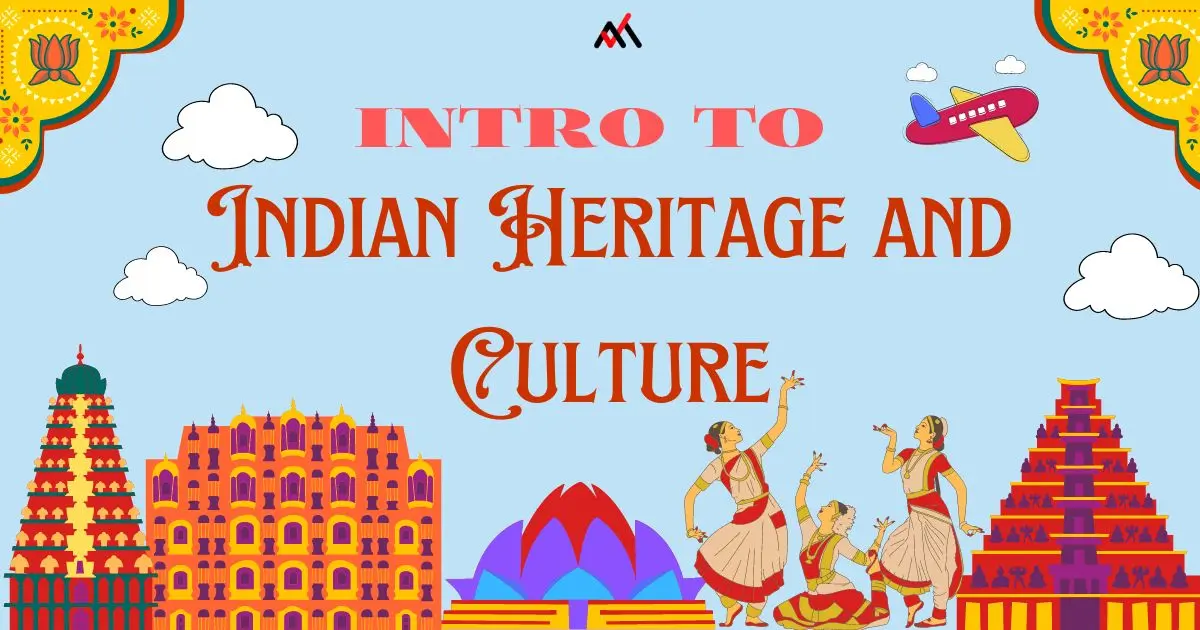India, a land of ancient wisdom, rich traditions, and diverse cultures, boasts an unparalleled heritage that spans thousands of years. Its heritage is not merely a collection of artifacts and historical records, but a living tapestry that has woven together the threads of countless civilizations, languages, religions, and artistic expressions.
From the Indus Valley Civilization to the modern era, Indian heritage stands as a testament to the resilience of people and their ability to preserve their essence while embracing change.
Page Index
Historical Marvels
India’s heritage finds its roots in the pages of history, where the Indus Valley Civilization, one of the world’s oldest urban cultures, flourished around 3300 BCE. The remnants of Mohenjo-Daro and Harappa evoke a sense of awe, showcasing advanced urban planning and remarkable craftsmanship.
The epics of Ramayana and Mahabharata provide insights into the social, ethical, and spiritual fabric of ancient India. The influence of dynasties like the Mauryas, Guptas, and Mughals is evident in the architecture that graces the landscape.
The intricately carved temples of Khajuraho, the majestic forts of Rajasthan, and the Mughal marvels like the Taj Mahal stand as timeless testaments to the artistic prowess of their eras. Each structure tells a story of the people who lived in those times, their beliefs, and their aspirations.
Spirituality and Philosophy
Indian heritage is inseparable from its spiritual and philosophical traditions. The concepts of karma, dharma, and moksha outlined in the Vedas and Upanishads form the bedrock of Hindu philosophy, offering guidance on ethical living and the pursuit of ultimate truth. The teachings of Buddhism, Jainism, and Sikhism emerged as responses to evolving societal needs and continue to influence millions worldwide.
Yoga and meditation, born in ancient India, have transcended boundaries to become globally practiced techniques for physical and mental well-being. The profound teachings of spiritual leaders like Mahatma Gandhi, who advocated for non-violence and civil disobedience, have left an indelible mark on the world’s understanding of peaceful resistance.
Cultural Diversity
Indian heritage is characterized by its remarkable cultural diversity, with each region boasting its own languages, traditions, and art forms. From the classical dance forms like Bharatanatyam, Kathak, and Odissi to the kaleidoscope of festivals like Diwali, Holi, Eid, and Christmas celebrated with equal fervor, India is a melting pot of cultures that coexist harmoniously.
Language, too, plays a crucial role in preserving the heritage. With a multitude of languages spoken across the nation, each with its script, India’s linguistic diversity is a treasure trove that reflects the intricacies of its past.
UNESCO World Heritage Sites
In addition to its historical, cultural, and spiritual heritage, India is home to a breathtaking array of natural wonders that have earned recognition as UNESCO World Natural Heritage Sites. From the Temples at Bishnupur, West Bengal (1998) to the Vadnagar – A multi-layered Historic town, in Gujarat (2022), each site offers a glimpse into India’s diverse ecosystems and unique natural landscapes.
Other recognized sites include:
- Mattanchery Palace, Ernakulam, Kerala (1998)
- Group of Monuments at Mandu, Madhya Pradesh (1998)
- Ancient Buddhist Site, Sarnath, Varanasi, Uttar Pradesh (1998)
- Sri Harimandir Sahib, Amritsar, Punjab (2004)
- River Island of Majuli in midstream of Brahmaputra River in Assam (2004)
- Namdapha National Park (2006)
- Wild Ass Sanctuary, Little Rann of Kutch (2006)
- Neora Valley National Park (2009)
- Desert National Park (2009)
- Silk Road Sites in India (2010)
- Santiniketan (2010)
- The Qutb Shahi Monuments of Hyderabad (2010)
- Mughal Gardens in Kashmir (2010)
- Delhi – A Heritage City (2012)
- Monuments and Forts of the Deccan Sultanate (2014)
- Cellular Jail, Andaman Islands (2014)
- Iconic Saree Weaving Clusters of India (2014)
- Apatani Cultural Landscape (2014)
- Sri Ranganathaswamy Temple, Srirangam (2014)
- Monuments of Srirangapatna Island Town (2014)
- Chilika Lake (2014)
- Padmanabhapuram Palace (2014)
- Sacred Ensembles of the Hoysala (2014)
- Sites of Saytagrah, India’s non-violent freedom movement (2014)
- Thembang Fortified Village (2014)
- Narcondam Island (2014)
- Moidams – the Mound-Burial system of the Ahom Dynasty (2014)
- Ekamra Kshetra – The Temple City, Bhubaneswar (2014)
- The Neolithic Settlement of Burzahom (2014)
- Archaeological remains of a Harappa Port-Town, Lothal (2014)
- Mountain Railways of India (Extension) (2014)
- Chettinad, Village Clusters of the Tamil Merchants (2014)
- Bahá’í House of Worship at New Delhi (2014)
- Evolution of Temple Architecture – Aihole-Badami-Pattadakal (2015)
- Cold Desert Cultural Landscape of India (2015)
- Sites along the Uttarapath, Badshahi Sadak, Sadak-e-Azam, Grand Trunk Road (2015)
- Keibul Lamjao Conservation Area (2016)
- Garo Hills Conservation Area (GHCA) (2018)
- The historic ensemble of Orchha (2019)
- Iconic Riverfront of the Historic City of Varanasi (2021)
- Temples of Kanchipuram (2021)
- Hire Benkal, Megalithic Site (2021)
- Bhedaghat-Lametaghat in Narmada Valley (2021)
- Satpura Tiger Reserve (2021)
- Serial Nomination of Maratha Military Architecture in Maharashtra (2021)
- Geoglyphs of Konkan Region of India (2022)
- Jingkieng Jri: Living Root Bridge Cultural Landscapes (2022)
- Sri Veerabhadra Temple and Monolithic Bull (Nandi), Lepakshi (The Vijayanagara Sculpture and Painting Art Tradition) (2022)
- Sun Temple, Modhera, and its adjoining monuments (2022)
- Rock-cut Sculptures and Reliefs of the Unakoti, Unakoti Range, Unakoti District (2022)
- Vadnagar – A multi-layered Historic town, Gujarat (2022)
Preserving the Legacy
While India’s heritage is a source of immense pride, it also faces challenges in the modern era. Urbanization, environmental degradation, and changing societal norms can threaten the preservation of historical sites, cultural practices, and natural habitats. The government, communities, and individuals must collaborate in safeguarding this invaluable legacy, both cultural and natural, for future generations.
In conclusion, Indian heritage is a tapestry woven with threads of history, spirituality, culture, philosophy, natural splendor, and the recognition of UNESCO. It encapsulates the journey of a nation through time, serving as a bridge between the past and the future.
As India continues to evolve, its heritage remains a steadfast reminder of its identity, diversity, and values that have stood the test of time. From its ancient cities to its breathtaking landscapes, Indian heritage is a treasure that enriches the world.


